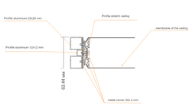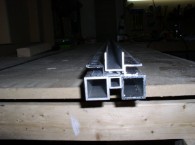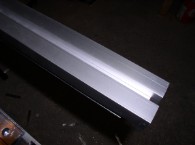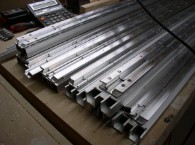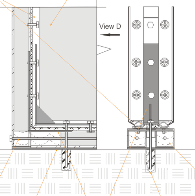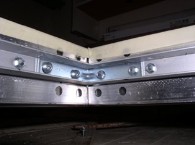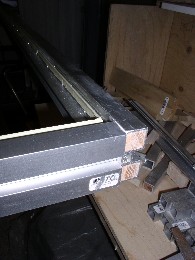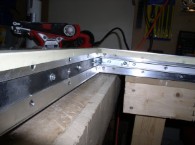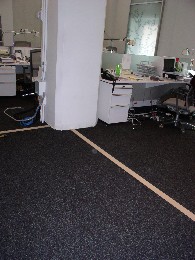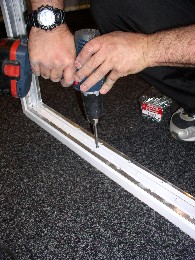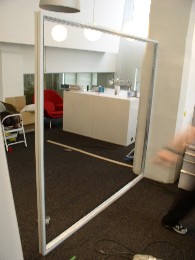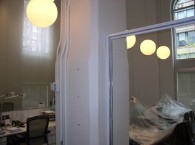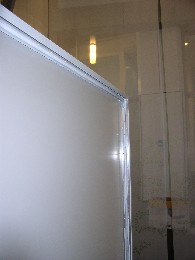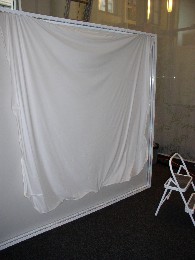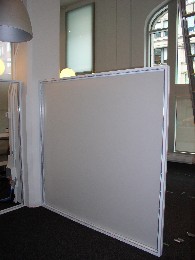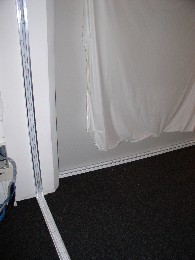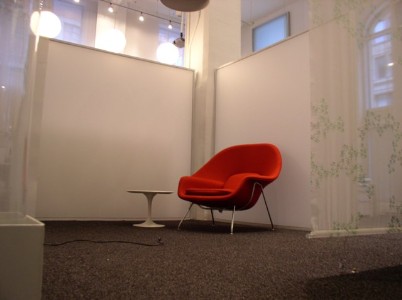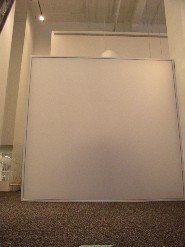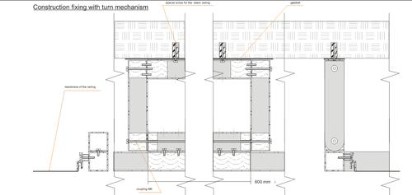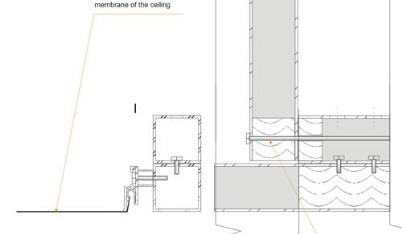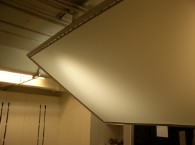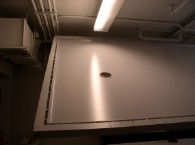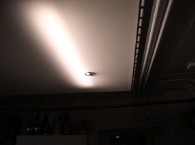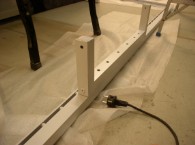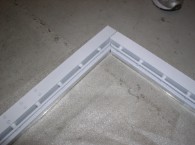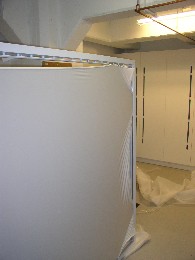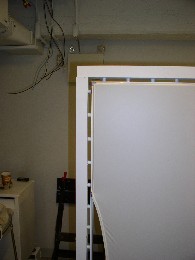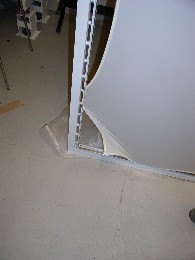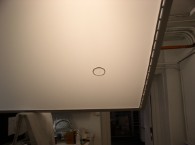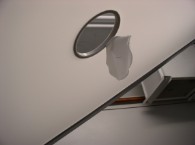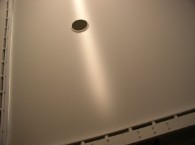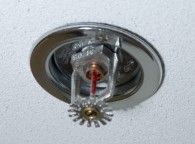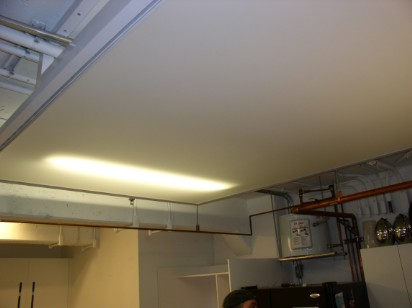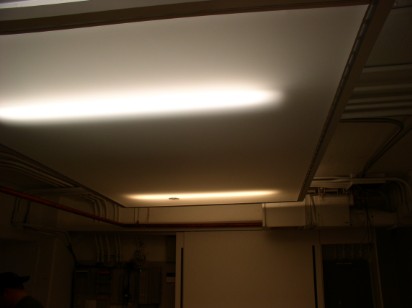Stretch ceilings on a frame structure & Laterza project - Plafonds BZ systems Inc
Main menu:
Stretch ceilings on a frame structure & Laterza project
Stretch ceilings on a frame structure & Laterza project.
The specifics of North-American commercial interior design (i.e. high ceilings with exposed HVAC systems and other mechanical elements) have set a vast use for stretch ceilings on frames or suspended on rods.
Such approach found its use in luxury spaces with a relaxed atmosphere. Not long ago, our company successfully implemented Alex Laterza's design using stretch ceiling technology in a small office building. The idea was to reduce the noise level within office space without losing any natural lighting or making any major changes to interior design.
Suspended ceiling frame structure
Frame structures that support the ceiling membrane must have one distinctive property: they must be able to resist to high levels of bending stress.
When you have a rectangular ceiling, stretching force of the ceiling plane is somewhere about 50 kg/ Linear Meter , and a poor structure would deform under such stress. Structural resistance is critical when installing a translucent membrane, since transversal ribs cannot be used for aesthetical reasons. Some design ideas can be a challenging task for manufacturers and contractors of stretch ceilings.
Back to project, the task was even more difficult, since the stretch ceiling was used as an interior partition and the structure of the frame had to hold two membrane screens on each side.
In order to obtain the required resistance, PNH specialists developed an assembly of six standard and custom made pieces to assemble the frame.
To ensure firmness between all pieces and their resistance to rotational force, additional reinforcement corner pieces and oak shims were installed within the frame.
Afterwards, the assembled frame was attached to the floor and to a structural column.
Then came time to attach the translucent, micro perforated** "New Mat" membranes. The partition assembly was 2200 x 2100 x 62mm
** Micro perforated membranes
The "New Mat" micro perforated membranes have an acoustical isolation property and were installed in order to reduce voice sound transmission within the office, without compromising the natural lighting of the space as mentioned before.
Translucent "New Mat" membranes have great light penetration and optical properties. In this project, the architect combined the stretch ceilings with existing lighting which created a soft, pastel alike glow of the partitions, making a relaxing, comfortable atmosphere within office space. The client thinks to install lights inside of the partitions (between membranes) in order to obtain an even more impressive visual effect.
Another space that found use for stretch ceiling was the lunch room.
However, the client requested an easy accessibility inside the ceiling plane, for maintenance purposes. The solution that PNH inc. specialists found was to construct a custom made hinges on one of the lateral sides and detachable fixture on the opposite side. The size of the whole assembly was 2900 x 1760 x 38 and it had to be held entirely by one side of the frame when accessing the ceiling space.
The frame was prefabricated at BZ systems inc. with standard aluminum parts and then simply assembled on site.
Then came time to stretch the membrane and attach the whole structure to the ceiling. However there was a small nuance - a sprinkler head located in the corner of the frame had to be left exposed due to fire safety regulations. In order to make an opening within the ceiling, a special metal ring was glued on the membrane and then a cutout was performed.
The following stretch ceiling does not represent something exceptional in terms of design or technology, however it demonstrates well the capability to hide unwanted elements of the ceiling without restricting access to them. These systems come in handy in places where gypsum or suspended ceilings cannot be installed and the only other option is to leave the ceiling exposed.
If a client would want to achieve the same light effect without stretch ceiling technology, the only other material that would be able to create similar lighting effects is acryl glass. However, acryl glass is much more expensive and much heavier than a translucent membrane, and in consequence it would require a massive frame which leads once again to a higher cost. Another advantage that stretch ceilings have over any other material is the resistance to sagging. Maximal sagging that might occur is several millimeters at most and is not even visible with a naked eye.
Without a doubt, Alexander Laterza's project involving stretch ceilings technology was a success.
To conclude, here are some distinctive advantages of stretch ceiling technology:
- Reduction in ceiling structure weight (16-20 times lighter than conventional ceiling structure).
- Since most of the parts are prefabricated, the assembly time is reduced.
- Easy to create various volumes and three dimensional forms.
- Fast and clean assembly with little waste material.
- Micro perforated membranes have a sound transmission coefficient close to 1.
han a translucent membrane, and in consequence it would require a massive frame which leads once again to a higher cost. Another advantage that stretch ceilings have over any other material is the resistance to sagging. Maximal sagging that might occur is several millimeters at most and is not even visible with a naked eye.
